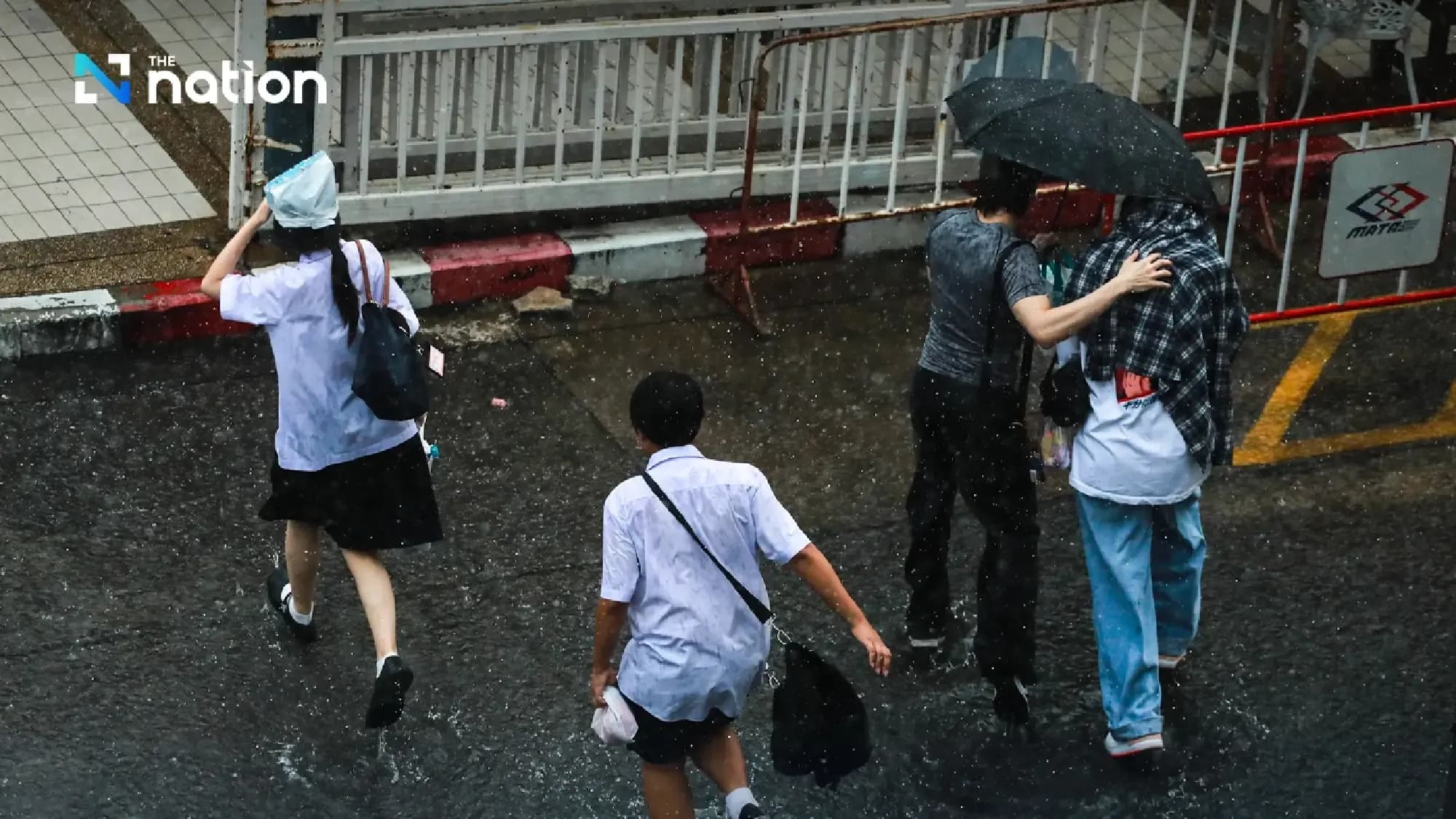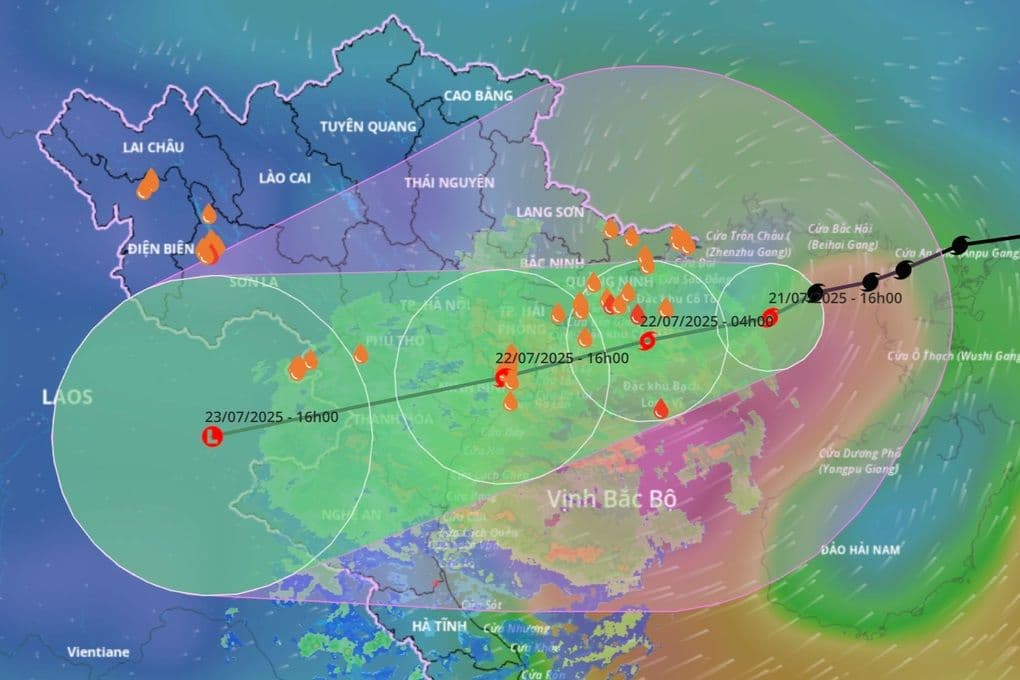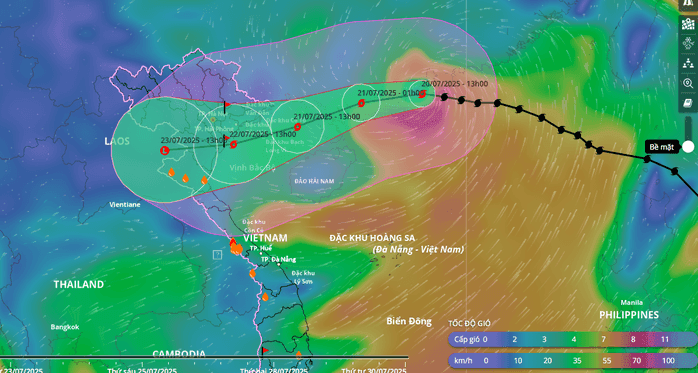Wipha's Wake: Inside Thailand's Coordinated Climate Defense
Explore Thailand's robust defense against Tropical Storm Wipha. Uncover the coordinated 'war room' strategy, marine safety measures, and community resilience efforts.

The Storm's Shifting Path and Immediate Echoes
Tropical Storm , initially a typhoon, presented with a dynamic meteorological challenge as it traversed the South China Sea. After making landfall in and downgrading to a tropical storm, Wipha's westward trajectory brought it into the Gulf of Tonkin, with an anticipated second landfall in northern . Despite its primary path, Wipha’s expansive influence, coupled with a strengthening southwesterly monsoon, promised a significant weather event for Thailand. The quickly pinpointed areas bracing for impact, including provinces like , , , and , as well as parts of the Central and Northeastern regions. , the bustling capital, faced a substantial 70% chance of thunderstorms. This initial phase underscored the fluid nature of tropical systems and the immediate need for vigilance across diverse geographical zones, from coastal areas to the country's interior.
Orchestrating the Defense: Thailand's 'War Room' Strategy
In response to Wipha's evolving threat, Thailand swiftly activated its sophisticated 'climate defense' mechanism, centered around a national-level 'war room.' This 24-hour command center, led by the under Director-General , became the nerve center for real-time weather monitoring and multi-agency coordination. Key players like the TMD, the , the , and the national space body converged, pooling their expertise and data to assess Wipha's potential impact comprehensively. Interior Minister , acting as the National Disaster Prevention and Mitigation Commander, issued clear directives: monitor conditions meticulously, assess risks proactively, and ensure robust public communication. This collaborative approach exemplifies Thailand's strategic shift towards an integrated, data-driven response to severe weather, ensuring that no single department operates in isolation.
Navigating Troubled Waters: Protecting Marine Livelihoods
While the focus on land-based rainfall was paramount, Wipha's influence extended significantly to Thailand's vital marine sectors, necessitating equally rigorous protective measures. The strengthening southwesterly monsoon, amplified by the storm, rapidly deteriorated sea conditions, particularly in the upper , where waves were predicted to surge to 2-4 meters, even exceeding 4 meters during intense thunderstorms. Similar challenging conditions, with waves reaching 2-3 meters and higher in stormy zones, were forecast for the lower Andaman Sea and the upper . Recognizing the profound implications for Thailand's fishing communities and maritime industries, authorities issued urgent advisories. Fishermen and boat operators were strongly urged to exercise extreme caution, avoid navigating through thunderstorm areas, and, critically, small boats were advised to remain ashore. This proactive safeguarding of marine livelihoods showcases a holistic approach to disaster preparedness, acknowledging the interconnectedness of land and sea in national resilience.
Community Alert: Empowering Preparedness on the Ground
Translating high-level meteorological forecasts into actionable community-level preparedness is a cornerstone of Thailand's climate defense. With Wipha's heavy rainfall threats, particularly severe in provinces like , , Chanthaburi, Trat, and Ranong, public advisories became crucial. Residents in susceptible areas – near slopes, waterways, and low-lying zones – received urgent warnings to be vigilant for flash floods and runoff. This direct communication aimed to empower citizens with the knowledge needed to protect themselves and their property. The Ministry of Interior's directive to monitor conditions, assess risks, and prevent misinformation highlighted the commitment to clear, consistent public engagement. By issuing timely weather alerts, such as the TMD's 24-hour forecast for July 20-21, and emphasizing local vulnerabilities, Thailand ensured that preparedness wasn't just a government mandate but a shared responsibility, fostering a culture of community resilience against immediate threats.
Beyond Wipha: Building a More Resilient Thailand
Tropical Storm Wipha, while a significant weather event, served as a compelling real-world test of Thailand's evolving 'climate defense' strategy. The comprehensive, multi-agency response, from the centralized 'war room' coordinating disparate departments to the targeted advisories for both terrestrial and marine communities, underscores a proactive and integrated approach to disaster management. This strategic preparedness goes far beyond mere reactive measures; it embodies a commitment to leveraging real-time data from entities like Gistda, fostering seamless inter-departmental collaboration, and prioritizing public engagement to mitigate impacts before they escalate. The lessons learned from Wipha's passage reinforce Thailand's dedication to building long-term national resilience. By continuously refining these sophisticated systems and embedding preparedness into the national consciousness, Thailand is not merely weathering storms but is strategically fortifying itself against the increasingly unpredictable challenges of a changing climate, setting a compelling example for regional climate adaptation.
Related Articles

Wipha's Whirling Warning: How Vietnam Faced an Unpredictable Force

Wipha's Whirling Warning: How Vietnam Faced an Unpredictable Force

Wipha's Deceptive Dance: Unpacking the Enigma of Typhoon No. 3

Wipha's Deceptive Dance: Unpacking the Enigma of Typhoon No. 3

Wipha's Unseen Architect: Decoding the Unusual Forces Behind Vietnam's Looming Deluge

Wipha's Unseen Architect: Decoding the Unusual Forces Behind Vietnam's Looming Deluge

Wipha's Ascent: Navigating the Multi-Faceted Peril Facing Northern Vietnam
